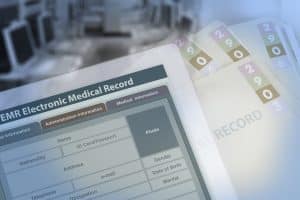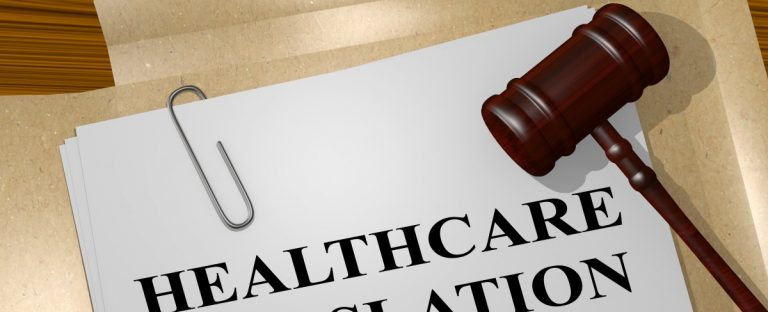Your holistic practice’s longevity and financial success depends on how efficiently and effectively you can manage your revenue cycle.
Without ensuring this key component of your strategy is running smoothly, you’ll be struggling to keep your practice in the green.
A comprehensive revenue cycle management strategy can really transform your holistic practice and help chart the course of your practice’s future. But what exactly is a revenue cycle and how do terms like accounting or medical billing factor in?
We’ll break it down in this article; keep reading to learn more!
What Is Revenue Cycle Management?
In the most general definition, revenue cycle management, sometimes shortened to RCM, encompasses the identification, collection, and management of a practice’s finances based on the services rendered.
In other words, RCM refers to the processes required to manage and streamline the various components of a holistic practice’s financial standing.
The typical steps of a practice’s revenue cycle are as follows:
- Patient registration and scheduling
- Prior authorizations and eligibility verification
- Patient visit and treatment
- Documentation
- Charge capture and charge entry
- Medical coding
- Medical claim submission
- Payment posting or denial
- If claims are rejected, rework and resubmit until you get the money owed
A frequently asked question regarding RCM: who exactly is involved in the revenue cycle at your holistic practice? The short answer is everyone!
This includes your
- Patients
- Payers, whether it’s insurance companies or government programs
- Staff
Anything to do with the financial side of your holistic practice is, obviously, vital for its long-term presence in your community and your ability to scale up in the future.
For instance, effectively managing rejected claims and establishing processes that address errors in your claims is a foundational step to optimizing your overall revenue cycle management strategy.
What’s the Difference Between Medical Billing and Healthcare Accounting?
Since there are so many facets of the healthcare revenue cycle, it’s easy to use other financial terms interchangeably. Take medical billing and accounting—what do these two concepts actually mean and how do they relate to your holistic practice’s RCM?
Let’s break them down here:
Medical Billing
Medical billing is the process of translating a patient’s delivery of care into a financial representation so that your practice can be reimbursed for services rendered.
This process involves medical billing codes and submitting claims to insurance companies, Medicare, the VA, or whatever other payer programs relevant to your patients, so that you can receive money from them for the services you provided.
Healthcare Accounting
On the flipside, healthcare accounting is the practice of processing and recording financial transactions; basically, what you do in your personal finances but perhaps with a few more figures thrown into the mix.
Healthcare accounting includes a few different standards for performance, such as accounts receivable and accounts payable, which are two metrics that are vital to benchmarking your holistic practice’s financial health.
Effective Revenue Cycle Management Depends on Accurate Medical Billing
As the old adage goes, time is money. Nowhere is that truer than in the case of your holistic practice’s revenue cycle! Ensuring your medical billing process is streamlined and as accurate as possible might take some time and effort to establish but will bring tremendous benefits to your practice.
A streamlined medical billing and coding process means you’re only working each of your claims once and submitting them promptly so that you can get paid in a timely manner! Reworking claims happens to the best of us, but should be the exception, not the rule.
The sooner you can minimize bottlenecks and clunky medical billing processes, the better off your practice will be!
Partner with Holistic Billing Services to Optimize Your Revenue Cycle!
Partnering with a medical billing firm to handle your medical billing can radically transform your holistic practice’s revenue cycle.
A trusted firm can empower your practice with comprehensive reporting and can act as an in-house expert for all your revenue cycle needs. With the medical billing burden off your shoulders, you can focus on what matters most: delivering quality care to your patients.
With the friendly experts at Holistic Billing Services, you’ll have decades of experience by your side who can help navigate the worlds of medical billing, healthcare software, and more! Ready to optimize your revenue cycle?
Paperwork is often credited with causing headaches, not reducing harm or actually helping anyone.
So, while it might seem counterintuitive to connect medical documentation to increased patient outcomes, SOAP notes are a standalone example of how that connection is real. This type of medical documentation–short for Subjective, Objective, Assessment, and Plan–is an essential component of any healthcare practice, whether traditional or holistic.
In this article, we’ll dive into what exactly are SOAP notes, how they help reduce patient risk and result in better patient outcomes, plus why they’re important for medical billing. Keep reading to learn more!
What are SOAP Notes?
This form of healthcare documentation is the standard formula for compiling a comprehensive report of your patient’s experience and charting a course forward with a treatment plan that can help their ailments.
Let’s dive into each letter of this fun acronym:
S = Subjective
This first component of SOAP notes involves noting the subjective experience of your patient from an array of perspectives, including their feelings, perceptions, and personal opinions in relation to their condition.
The Subjective section of SOAP notes captures how the patient is feeling, thinking, and experiencing their ailments in their own words. This is a great start to the dialogue between patient and provider because the healthcare practitioner can gain an understanding of how the patient is doing.
Outlining this section of SOAP notes might vary from practice to practice, specialty to specialty. For example, if you were performing an initial consultation for someone seeking acupuncture services, you might ask the following:
- Rate the severity of pain on a scale of 1 to 10
- Describe the feeling of the pain (is it shooting, throbbing, dull, aching, etc.)
- Note the places of pain on the body
- Describe when the pain started and how it might change during the day
- Ask how the patient feels about needles
O = Objective
Once you’ve established the subjective views of the patient, it’s time to acquire the objective aspects of their condition. This might include:
- Allergies
- Body posture
- Range of motion
- Imaging results
- Medical diagnoses
- And more!
Each notation in this section should be factual and able to be proven; in other words, be sure to filter out assumptions or subjective language in this section.
A = Assessment
When you combine the information of the subjective and objective experience of the patient, you can conduct an assessment to determine what might be ailing your patient. If there might be a handful of causes, then be sure to list what you hypothesize your patient is dealing with ranging from most to least severe or important.
This section is vital for outlining your thought process and explaining how you arrived at your conclusions. Not only is this important for leaving a paper trail for your own knowledge, but it’s also incredibly helpful for other providers to refer to when treating your patient from other perspectives, such as conventional medicine providers.
P = Plan
Now that you’ve gathered the subjective, objective, and assessment components of your medical documentation, you’ve reached the final step: creating a plan. This might include noting:
- Which follow-up appointments are necessary and with whom
- Referrals to other providers or specialists
- Referrals for further testing or diagnostic services
- Therapy
Be sure to include all relevant information that the patient will need to follow through with your treatment plan and maintain an open line of communication with them after you provide your services.
How Do SOAP Notes Reduce Patient Risk?
The purpose of SOAP notes is multifold–they are essential for leaving a paper trail for medical billing reasons, they help you and other providers document a patient’s condition, and they reduce patient risk. How does paperwork lead to better patient outcomes?
Comprehensively analyzing your patient’s pain points, whether literal, metaphorical, or perceived, means that you’re taking the time to be thorough. Looking at something from multiple angles or considering a wide range of factors means that something is less likely to slip through the cracks or be ignored.
This means that you’re being vigilant in your interaction with the patient and valuing their input as much as the objective facts or other providers’ interpretations. Recognizing the role that your patient plays in their own treatment plan is essential for keeping them engaged, continuing an open dialogue in the patient-provider relationship, and overall reducing their risk.
Wish You Had More Time to Spend with Patients? Partner with Holistic Billing Services!
Do you find yourself swamped with rejected medical billing claims, puzzled by the differing processes for billing private insurance or government programs like Medicare, and bewildered by the latest legislative initiatives that will impact your holistic practice? Keeping your practice running smoothly takes a lot of time and energy–-just managing your revenue cycle alone is a ton of work!
Wish you had more time to spend with patients and detailing your SOAP notes? Partner with Holistic Billing Services to handle the medical billing burden so you can do what matters most: deliver quality care to your patients. Our friendly experts have decades of experience in your specialty and are eager to help your holistic practice succeed.
The healthcare revenue cycle is fraught with various moving parts and pieces that can throw a wrench in your financial performance; one such example is that of rejected claims, which can delay your payment for services rendered, cause extra stress, and result in lower financial performance for your holistic practice.
The ideal metric for tracking the performance of your claims processing strategy is to have a 95% or higher clean claims rate—in other words, you want to aim for at least 95% of your claims to be processed without issue. These clean claims demonstrate that your medical coding and medical billing approach is effective and efficient. Reworking rejected claims costs your practice time and money, plus it causes unnecessary headaches.
While a 95% clean claims rate is ideal, the reality is that practices average 75-85% clean claims, which means that up to a quarter of revenue is being held up by rejected claims. If your holistic practice accepts insurance or patients covered by Medicare, then this can significantly stymie your healthcare revenue cycle.
Hence minimizing rejected claims is a priority; in this article, we’ll dive into how rejected claims help your practice, hinder your practice, and some best practices for the medical billing and coding process.
How Rejected Claims Help Your Practice
It might sound counterintuitive, but if you shift your perspective to see rejected claims as something that can help your holistic practice, then you’re already on the right track.
Rejected claims can present an important opportunity for your holistic practice’s overall revenue cycle in terms of revealing the points of improvement in your medical coding and billing process.
Rejected claims were, more often than not, rejected for important reasons—maybe the claim wasn’t completely filled out, perhaps the codes were inaccurate or didn’t fully illustrate the services rendered, or something else happened.
Gather your rejected claims over the last 6 months or so and evaluate the frequency of claims being rejected, the reasons for the rejection, and the average time it took to correct and resubmit the claims. Armed with this information, you’ll notice where the points of improvement exist within your medical billing process.
Maybe you need to update the list of frequently-used medical billing codes that you reference when filling out your claims or perhaps one important part of the claim is constantly left blank by accident. Whatever the case, taking the time to see why the rejected claims are happening can empower you and your holistic practice to refine your internal medical billing and medical coding process.
Since insurance or CMS claims can be a significant portion of your holistic practice’s overall healthcare revenue cycle, rejected claims can reveal where your financial performance needs more attention or education.
How Rejected Claims Hurt Your Practice
Of course, on the other hand, if you can avoid dealing with rejected claims then you should absolutely do so! These types of claims cost your holistic practice time and money and negatively impact your revenue cycle.
By having to spend more time reworking a claim, you’re unable to focus on more strategic initiatives like your marketing presence or attend to patient feedback. Plus, this time spent costs money; whether it’s the time you spend on the clock or paying for a team member to tackle the rejected claims issues, reworking claims can be costly.
If the average cost for filing a claim is $6.50, the average cost of a reworked claim is $25. This might not be too bad to deal with when only one or two claims need to be reworked, but if your holistic practice is dealing with dozens of rejected claims, then this amount can quickly add up!
For example, if you have 100 rejected claims in one month, you’ll have to spend an additional $2,500 per month. Now, think about it from an annual standpoint—that’s a whopping $30,000 each year. Plus, rejected claims result in delayed reimbursement, which slows down your practice’s revenue cycle and skews your financial performance metrics.
4 Steps to Minimize Rejected Claims
So what are some steps you can take to minimize the amount of rejected claims your holistic practice has to deal with? Check out these tips:
Verify Patient Eligibility Prior to the Date of Service
Established patients are great for your practice, but make sure you don’t assume their insurance coverage hasn’t changed over time. Simply asking them at every visit if their coverage has changed or if they have any patient information updates can save you and your practice time later down the line. Outdated patient information is a tremendous source of rejected claims, so take the extra minute ahead of time to confirm your patient’s information before proceeding with the claim.
Double-Check Medical Coding Modifiers
The world of medical coding and medical billing is complex and intimidating; one crucial step in the medical coding process is to verify that you’re utilizing the correct medical coding modifiers. These modifiers might seem too small to matter, but your claim can be rejected if not appropriately coded!
File Your Claims In a Timely Manner
Insurance companies and CMS typically require you to submit claims within a tight window of time, and missing that window can increase your chances of a rejected claim. Be sure to pay attention to claim filing deadlines and keep in contact with the pertinent insurance company if you encounter issues or have questions. Resolving any issues before filing a claim—while staying within the timeline—can help ensure your claim goes through without any troubles.
Outsource Your Medical Billing Altogether
If you find yourself and your team members swamped with rejected claims and simply wish you could make that part of your holistic practice disappear, then it’s time to consider partnering with a medical billing firm!
Outsourcing your medical coding and medical billing process to a trusted partner can immediately boost your revenue cycle and keep your holistic practice’s finances running smoothly. Plus, with the medical billing partner, you won’t have to worry about keeping up with esoteric legislation that impacts the billing process or stress about reworking claims since they’ll be handled correctly from the beginning.
Consider partnering with Holistic Billing Services to comprehensively manage your medical billing process so that you can focus on what matters most: your patients. Our experts have experience in your specialty, and we’re eager to help your holistic practice thrive!
Healthcare legislation can be tricky to navigate, especially when you’ve got a million other things on your plate. However, it’s still essential to keep up with because it can impact your holistic practice, healthcare revenue cycle, and patients.
One recent example is the No Surprises Act, which affects you, your patients, and your revenue cycle. This piece of healthcare legislation essentially aims to refine the medical billing process at the federal level—and we’ll dive into the details in this article here.
Keep reading to learn more about the No Surprises Act and its effects on your holistic practice!
What Is the No Surprises Act?
To sum up the No Surprises Act in one sentence? It’s intended to comprehensively mitigate surprise medical bills, which often occur when insured patients inadvertently receive care from out-of-network providers.
At the end of 2020, this piece of healthcare legislation was signed into law to provide federal-level protections for consumers against surprise medical bills. According to the handy Key Takeaways listed for the No Surprises Act, this legislation:
- Protects patients from receiving surprise medical bills resulting from gaps in coverage for emergency services and certain services provided by out-of-network clinicians at in-network facilities, including by air ambulances.
- Holds patients liable only for their in-network cost-sharing amount, while giving providers and insurers an opportunity to negotiate reimbursement.
- Allows providers and insurers to access an independent dispute resolution process in the event disputes arise around reimbursement; the legislation does not set a benchmark reimbursement amount.
- Requires both providers and health plans to assist patients in accessing health care cost information.
This Act was part of the Consolidated Appropriations Act of 2021, which handled a variety of public health and private insurance issues, and a majority of the initiatives outlined in this legislation took effect on January 1, 2022. The Departments of Health and Human Services (HHS), Treasury, and Labor are responsible for issuing regulations and guidance to implement many of the regulations.
How Does The No Surprises Act Impact Your Holistic Practice?
While sections of this new legislation won’t apply to your holistic practice—such as sections 105 and 106 that deal with air ambulance services and charges—there are still some important parts that might impact your practice, especially if you’re contracted with private health insurance companies.
The primary effect that this healthcare legislation has on the medical billing process is that out-of-network providers can’t bill patients for excessive charges, nor can the patient be held responsible for such charges.
How Does This Healthcare Legislation Impact Your Patients?
Ultimately, the No Surprises Act leads to enhanced transparency and patient engagement in the financial workings of your holistic practice. By increasing patient understanding of the medical billing process and what they are responsible for in the healthcare revenue cycle, patients can make informed decisions regarding their care.
Patient education and patient engagement are vital for your holistic practice, regardless of accepting insurance. Initiating the conversation with your patients about their responsibility for paying for services rendered is helpful because it encourages their questions and concerns. Utilizing these lines of communication can build rapport and trust between your patients and your holistic practice.

3 Medical Billing Tips for Your Holistic Practice
Whether your holistic practice is significantly or minimally, your healthcare revenue cycle and medical billing process can always benefit from a few tips:
Keep Patient Information Updated
From contact information to insurance carriers and more, there’s a lot of patient information that can change over time. Inaccurate patient information can lead to denied claims, which can throw a wrench in your holistic practice’s revenue cycle. Be sure to verify your patient’s data hasn’t changed or update their profile with new information on a regular basis to ensure nothing slips through the cracks.
Use Appropriate Codes and Modifiers
Medical coding accuracy plays a critical role in your practice’s revenue cycle; inaccurate or incomplete claims that use the wrong codes or modifiers can result in rejected claims that need to be reworked. Any additional time spent reworking claims means it’s costing your practice time and money instead of bringing in your reimbursement! Keep a list of frequently-used codes and modifiers so that you won’t have to look too hard for them when you’re filing claims.
Streamline Your Medical Billing Process by Partnering with a Medical Billing Firm!
Medical billing firms make it their job to stay updated on new healthcare legislation initiatives and ensure your revenue cycle is as optimized as possible. If your holistic practice is swamped with piles of claims that need to be filed or reworked, then it’s time to consider partnering with a medical billing firm to handle it.
With a medical billing partner, you’ll enjoy an immediate boost to your revenue cycle, more time to focus on patients, develop strategic moves for your practice, and gain insight into your financial performance.
Partner with Holistic Billing Services Today!
The experts at Holistic Billing Services are as invested in your success as you are—we work as an extension of your holistic practice! We’ve got experience in your specialty and can help you navigate the complexities of the medical coding and billing process so that you can focus on what matters most: delivering great care to your patients.
We offer a variety of acupuncture billing services, massage therapy billing services, and chiropractic billing services, including:
- Online insurance verifications
- EHR and SOAP documentation
- Insurance claims processing
- Insurance credentialing
Your holistic practice’s success and longevity within your community are predicated upon a streamlined healthcare revenue cycle—part of that comes from understanding a couple of key financial metrics that you can use to evaluate your practice’s current performance! Being able to calculate and track the financial key performance indicators, known as KPIs, of your holistic practice means that you’ll be able to make changes where needed and be better informed of your business’s status.
Two key metrics to track are the gross collection ratio (GCR) and the net collection ratio (NCR); these might sound the same, but they track different aspects of your practice. Both are valuable for you to know and measure because they help fill in the picture of your practice’s financial health!
Keep reading to learn the difference between gross and net collection ratios, plus how to calculate them for yourself.
What Is Your Gross Collection Ratio?
Let’s start with the GCR: the gross collection ratio refers to your practice’s gross income or gross profit; this is the most simple measure of your practice’s profitability. This metric includes the direct cost of producing or providing goods and services but doesn’t include the costs related to running your practice like administrative expenses, taxes, and other potential expenses.
An important note regarding the gross collection ratio is that it doesn’t deduct write-offs, so it’s considered to be a less effective measure of the financial performance of your holistic practice compared to the net collection ratio. Without removing write-offs, refunds, and contractual or non-contractual amounts from the math, you can’t get a comprehensive insight into your practice’s income.
What Is Your Net Collection Ratio?
On the other hand, your practice’s net collection ratio is an essential metric that measures how effectively your practice is at collecting all legitimate forms of revenue. This rate indicates inefficiencies in the process; for example, if a practice is struggling to collect payment due to bad debt, late filings, coding inaccuracies, claim underpayments or some other type of revenue issue, then it will have a low net collection rate.
The ideal net collection rate to strive for is 90% or above since that reflects your practice is collecting on all forms of revenue that it should be; great! However, if you find that your holistic practice’s NCR is below 90% then it might be wise to perform an internal audit of your billing practices.
Why Are These Financial KPIs Important?

These financial KPIs are important to your holistic practice’s success because they both provide visibility into how your practice is actually performing in relation to how it should be performing after factoring in any refunds, write-offs, or contractual and non-contractual amounts.
You can’t know what to improve about your practice’s financial standing if you’re not sure how well you’re doing in the first place; knowledge is power, after all! Streamlining your net collection rate can reveal areas within your medical billing and coding processes that might need some more attention and therefore result in an improved overall healthcare revenue cycle that benefits your practice.
How to Calculate Your GCR
Let’s take a look at how to actually calculate your practice’s gross collection ratio; the GCR formula looks like this:
Gross Collection Rate = Total Payments / Charges *100% (for a specific time period)
The gross collection rate only shows what your practice is allowed to collect. For example, you may have charged $200 but you only collected $175 from your insurance payer due to the agreement or contract that you might have signed.
Following this logic, the $175 is below the gross rate.
How to Calculate Your NCR
Since the net collection rate is one of the most important financial metrics to track for your holistic practice, it’s important that you calculate it with frequency—typically about once a quarter is a good measure of your practice’s financial performance.
A low NCR should be seen as an urgent priority since that directly affects the financial standing of your business. Optimizing your net collection rate starts with understanding how to assess your net collection rate. Calculating the net collection rate involves several important steps:
- Identify the time period that you want to monitor (e.g., 90 or 120 days). Assess data from an earlier period in which the majority of claims would be closed and cleared; ~6 months back is advisable.
- Calculate total payments (from payers and patients) for the designated time period.
- Calculate total charges minus approved write-offs (e.g., due to contractual reasons, bad debt, professional courtesy discounts, etc.) for the designated time period.
- Divide your calculation in step 2 by your calculation in step 3. Then multiply by 100.
In the end, the formula looks something like this:
Net Collection Rate = (Payments / (Charges – Contractual Adjustments)) * 100%
Do this consistently (e.g., every 90 days) for a period of at least one year to get the most accurate average rate.
Once you determine how your baseline collection rate stacks up to that goal, use information from the holistic industry to compare it to industry averages. From there, set a collections metric objective based on how much you would like to see it go up and how this could affect your revenue stream.
Let Holistic Billing Services Handle Your Healthcare Revenue Cycle!
If your holistic practice is overwhelmed by the billing and coding processes, then turn to the experts at Holistic Billing Services to handle your healthcare revenue cycle! Our experts have experience in your specialty and we’re eager to help you thrive. Medical billing and coding is a complicated process that seems to change all the time with new regulations—let our team take that stress out of your daily workflow so you can focus on what matters most: delivering great care to your patients.
If you’re on the fence about opening up your practice to patients covered by Medicare, but you’re dubious of the extra workload dealing with billing Medicare for services rendered, then you’ve come to the right place.
Expanding your pool of patients to include those covered by Medicare is limited depending on your specialty—primarily acupuncture or chiropractic practices are covered by Medicare at this time—but can provide a great boost to your revenue cycle. Anticipating a headache when dealing with the medical billing process, however, is reasonable.
We at Holistic Billing Services understand the struggle, so let’s break down a few tips for the Medicare billing process!
What Types of Holistic Services Does Medicare Cover?
While Medicare’s coverage of complementary and integrated healthcare isn’t terribly comprehensive, there are a couple of holistic services that Medicare currently covers; these include:
Acupuncture
Acupuncture has been proven to be effective for treating a variety of ailments and chronic conditions. At present, Medicare beneficiaries may be treated for chronic lower back pain, defined as:
- Lasting 12 weeks or longer;
- nonspecific, in that it has no identifiable systemic cause (i.e., not associated with metastatic, inflammatory, infectious, etc. disease);
- not associated with surgery; and
- not associated with pregnancy
Medicare will cover up to 12 visits in a 90 day period; if the patient demonstrates improvement, then Medicare will cover an additional 8 visits but treatment is not to exceed 20 treatments in an annual period.
The good news is that there are legislative efforts to greatly expand Medicare coverage for acupuncture! In July 2021, the Acupuncture for Seniors Act, legally classified as HR 4803, was introduced to Congress and would significantly broaden the scope of acupuncture coverage provided by Medicare.
Chiropractic Treatments
Did you know that Medicare has technically covered chiropractic treatments for 50 years?
In 1972, Medicare first introduced coverage with the limited scope of spinal manipulation; not much has changed since then, unfortunately.
However, much like the Acupuncture for Seniors Act would improve coverage for acupuncture services, there are promising legislative efforts to expand Medicare coverage of chiropractic treatments! The Chiropractic Medicare Coverage Modernization Act, legally identified as HR 2654, would enable patients under Medicare coverage to visit a chiropractor for their comprehensive range of services.
Such services might include manual manipulation of the patient’s spine and extremities, evaluation and management of conditions, diagnostic imaging, and the utilization of other non-drug treatments in an effort to combat prescription abuse and fight the opioid epidemic.
Essentially, this bill:
- Provides patient access to all Medicare-covered benefits as delivered by a chiropractor’s state licensure
- Categorizes a Doctor of Chiropractic (DC) as a “physician” in Medicare’s programming and thus expands their authority as recognized by Medicare
- Requires that DCs complete a documentation webinar
- Has bipartisan support and was introduced by 16 cosponsors from both sides of the political aisle
As a whole, this legislation would enable tremendously more access to all services provided by a chiropractor and thus empower chiropractors to treat a new range of patients who are covered by Medicare.
Medicare Billing: 3 Tips for Your Holistic Practice

When it comes to the Medicare billing process, follow these essential steps to streamline your holistic practice’s revenue cycle:
Submit Accurate and Complete Claims
One of the biggest tips for Medicare billing—and any kind of medical billing processes your holistic practice might handle—is to submit claims that have been coded correctly and to the fullest extent possible. Inaccurate or incomplete claims really throw a wrench in your practice’s revenue cycle by delaying payment and dedicating resources to reworking a claim that could have been better utilized elsewhere.
Medicare coverage and payments require an item or service:
- Meet a benefit category
- Isn’t specifically excluded from coverage
- Is reasonable and necessary
Be sure to employ the most current and comprehensive CPT codes needed, plus any further documentation required with the claim so that your submission can be addressed in a prompt manner.
Send Claims to the Appropriate Programs
Filling out claims correctly and completely is an essential foundational step for Medicare billing, but an important follow-up is making sure you’re sending that claim to the appropriate program pertaining to your patient.
For example, if your patient is enrolled in Medicare’s Fee-for-Service program, you’ll need to send the claim to your Medicare Administrative Contractor (MAC); on the other hand, if your patient is enrolled in a Medicare Advantage (MA) plan, then you’ll need to submit your claim to their MA plan directly.
A third option is that your patient might have primary coverage provided by another payer—known as the Medicare Secondary Payer (MSP) program—like an insurance company; in this case, you’ll need to submit the claim to the primary coverage provider first.
File in a Timely Manner
Medicare mandates claims are filed within 12 months or 1 calendar year; claims that are filed after this strict deadline are automatically denied. Keep in mind that this kind of denial isn’t the same as a determined rejection based on the claim itself—missing the window for filing is a denial that cannot be appealed.
Partner with Holistic Billing Services to Streamline Your Medical Billing Processes!
Want to optimize your practice’s revenue cycle? Ready to expand the range your holistic practice offers to your community by including acupuncture or chiropractic services? Partner with an expert medical billing firm that has specialized expertise in handling medical and Medicare billing experience.
At Holistic Billing Services, we deal exclusively with holistic healthcare practices that deliver acupuncture, massage therapy, and chiropractic treatments to communities around the country. Whether you have questions on chiropractic insurance billing or other methods to enhance your revenue cycle management, feel free to contact our team today and let us know how we can help your practice today!
Your holistic practice’s health insurance denial rates are some of the most significant indicators of your medical billing success. Unfortunately, they’re also one of the most difficult elements of your billing operation to improve. If you’re not paying close attention to your insurance claim denials rate, you’re jeopardizing the financial stability of your practice. By following these best practices guidelines, you can avoid insurance claim denials and achieve your holistic practice’s overall revenue potential.
What Are Insurance Claim Denials?
The medical billing process is integral for practices to receive reimbursements from health insurance companies. When patients utilize insurance to pay for treatments, healthcare providers have to submit claims so they can be paid for their specific services from the insurance companies. While medical billing ensures that holistic practices receive their due payments for treatments, it’s also a complex process. 
If claims are missing information or filled out inaccurately, then they can be denied by the insurance companies and stymie the reimbursement process. Insurance claim denials are frustrating to any holistic practice; not only is the payment completely denied or delayed, but the time it takes for reimbursements can extend to weeks or longer. For the most timely and full reimbursements, holistic practices must keep denials in medical billing as minimal as possible.
Common Reasons for Claim Denials
The five most common procedures denied for holistic practices are:
- Manual therapy
- Heat/cold therapy
- Office/outpatient established visits
- Injections
- Acupuncture services.
For strong revenue cycle management, holistic practices should aim for a 95% clean claims rate; maintaining a high clean claims rate increases your practice’s efficiency and overall profitability. So, how can your practice avoid insurance claim denials and maintain a strong clean claims rate? Here are some of the top reasons for denials in medical billing:
Lack of Coding Specificity
Especially in the ICD-10-only landscape, claims that aren’t coded to the fullest level of specificity possible are ripe for denial by both public and private payers. That means that all identifiers and modifiers must be included on every claim, every time, covering concerns as granular as possible.
Billing Duplicate Claims
Even in well-organized operations, it’s surprisingly easy for practices to submit claims relating to the same encounter more than once. It may happen when a team member resubmits a claim before hearing back from the insurance company on the initial submission or fails to check on existing documentation as to whether the claim was submitted from the start. Either way, it’s an easy ticket to an unnecessary denial.
Timely Filing
Organizations often see unnecessary denials for failing to submit claims within the payer’s filing window. Why do practices wait? While reasons vary, the issue usually comes down to bandwidth and time: If your staff is stretched too thin, it’s impossible to address all of your front-office and back-office responsibilities in a timely manner. Contracting with a medical billing company is a smart way to keep filing deadlines from slipping past you.
Unverified Insurance
Insurance claim denials can be the byproduct of established patients updating their insurance without letting your practice know. Staff members may assume that regular patients have not had any changes to their insurance. However, if there have been changes to their insurance and no one checks their eligibility, then you might be headed straight for denials. Verifying your patient’s insurance at every visit can ensure there are no insurance-related issues during the billing process.
Best Practices for Avoiding Insurance Claim Denials
After learning the common reasons for insurance claim denial, try the following denial management tactics!
Track Every Claim
No claims should ever get “lost” in your practice management system. If that’s happening to you, it’s imperative to implement a more comprehensive process for tracking where claims stand throughout the entire revenue cycle. In many cases, claims slip through the cracks because they’re not handled fast enough by the team at your practice. Make sure your coders are coding every encounter on the same day as the date of service, then upgrade your technology to a system that scrubs, submits, and monitors claims with minimal employee effort.

Identify the “Why” In Your Insurance Claim Denials
Simply put, you can’t lower your denial rate if you lack an understanding of why your claims are being denied! Review all of your denial notices from a set period – for example, three or six months – and log the associated reasons for the denial. Look for patterns, then talk it out with pertinent staff members to get back on track.
Follow Up In Time
Most denials can be corrected and resubmitted within a given time frame, which varies from payer to payer. Find out what the window is for each of your major players, and make sure it never slips past you. Better yet, create a window of your own, like five to ten days, during which it is your billing team’s top priority to follow up on every denial and correct or appeal when appropriate.
Automate Eligibility Checking
Unfortunately, many holistic practices handle eligibility checks in an unstructured, unsophisticated way – heavy on last-minute calls to payers in advance of a patient appointment, or sometimes even after services have been rendered. Neglecting eligibility checks – or managing them in an outdated way – is a disservice to your patients and practice!
Reduce Your Claim Denial Rate with Holistic Billing Services!
By using these tips to reduce your holistic practice’s claim denial rate, you’re sure to make the most of your practice’s revenue in the future. However, these tips definitely require time and effort to do it successfully. If you’re in need of expert medical billing services, let Holistic Billing Services be your go-to source for an error-free billing solution.
With decades of experience dealing with a broad range of medical billing issues for all kinds of holistic practices, the team at HBS has seen just about every kind of medical billing error an organization can make. That’s why our clients trust us to help them manage their insurance claims to ensure they’ll be accepted as clean claims on the first attempt, avoiding lengthy back and forth negotiations with the insurance company. And best of all, you’ll avoid the scrutiny of federal and state auditors.
Contact us today to learn about Holistic Billing Services medical insurance billing services and find out how we can help you increase your clean claims rate!
Medical billing and coding is a complicated, but necessary, process for both medical and holistic practices looking to be reimbursed for services. However, the world of medical billing processes can become rather complicated very quickly, with people throwing around a lot of technical terms that holistic practices may not be accustomed to hearing or dealing with. If your acupuncture practice plans on accepting insurance, you will need to become familiar with this terminology to maximize your insurance reimbursements and minimize denied claims.
You will frequently hear the following common acupuncture billing terms when dealing with insurance claims or working with an experienced acupuncture billing company like Holistic Billing Services. To ensure a streamlined acupuncture billing experience, keep this list handy in case you ever need to quickly reference unfamiliar acupuncture billing terms!
What is Acupuncture Billing?

Medical billing is the process of healthcare providers submitting claims with insurance companies in order to be reimbursed for their services. This can include anything from treatments, procedures, and testing. The medical billing process is essential for most practices to receive payments.
Acupuncture billing practices are not the same as traditional medical billing and have a different set of requirements. Before billing can be initiated, many holistic practices must first be credentialed with health insurance companies. On top of your holistic practice’s insurance enrollments, the right billing, coding, and SOAP documentation must be used.
Acupuncture billing uses its own unique set of codes. Since acupuncture services are always coded in 15-minute increments, you will use one code for the initial 15 minutes of service and then a separate code for additional units of time. Acupuncture CPT codes will only vary if you include electronic stimulation in your treatment.
While a medical record audit is a lengthy process, it’s a necessary one to ensure your practice is as efficient, organized, and profitable as possible. Clinical documentation in medical records is crucial to delivering the most accurate care to patients, and disorganized medical records can easily hinder this. With medical record auditing, your holistic practice can determine areas that need attention before they result in fraudulent claims and billing activities.
Although medical records audits are necessary preventative measures for both conventional and holistic medical practices, they can be complex and time-consuming. Follow this guide for tips about how to have a thorough and efficient medical record audit to help your holistic practice be as successful as possible.
What is a Medical Record Audit?
Just like any conventional audit, a medical record audit is a process that includes internal or external reviews of what processes are being conducted accurately and what needs to be improved. This includes reviews of medical billing and coding accuracy, procedures, policies, and any other components that affect the efficiency and effectiveness of detailed documentation in your practice.
Medical record auditing is a preventative measure to catch potential errors that can result in liabilities and investigations. For example, these reviews can catch overlooked compliance issues that could impact your bottom line, your practice’s reputation, and the level of care you deliver to patients.
Why is Auditing Medical Records Important For Your Medical Practice?
The benefits of conducting medical record audits are numerous and should be reviewed regularly as a preventative measure at least once a year. Besides checking for compliance and liability errors, a medical record audit can also catch inefficiencies that are costing your holistic practice money.
According to the AACP, some of the benefits of medical record auditing include:
- To determine outliers before large payers find them in their claims software and request an internal audit be done.
- To protect against fraudulent claims and billing activities.
- To reveal whether there is a variation from national averages due to inappropriate coding, insufficient documentation, or lost revenue.
- To help identify and correct problems before insurance or government payers challenge inappropriate coding and conduct governmental investigations.
- To remedy undercoding and code overuse and to bill appropriately for documented procedures.
- To identify reimbursement deficiencies and opportunities for appropriate reimbursement.
- To stop the use of outdated or incorrect codes for procedures.
Auditing is especially important to catch mistakes that may otherwise go undetected and impact your bottom line. A medical records audit can also protect your holistic practice against fraudulent claims and compliance issues. If your practice is consistently submitting inaccurate coding, it could result in lengthy reimbursement delays, investigations, and penalties that cost you both money and time.
Four Tips for a Auditing Medical Records Successfully

When deciding to audit medical records in your holistic practice, the process can be intimidating due to its complexity and lengthy documentation. However, there are some tips you can implement to help speed up the process so you can achieve both an accurate and efficient medical record audit experience! Here are four simple tips to follow for a more successful medical record audit in your holistic practice:
As a holistic practice, you want to deliver the best treatments of holistic medicine to your patients – while also ensuring you are paid! To service your patients and grow your holistic business, however, you will want to consider provider credentialing as an in-network provider to bill insurance plans. To be approved, you must meet the numerous medical credentialing requirements for your practice. Besides meeting the requirements, you also must ensure that all the complicated paperwork is filled out accurately and the right documentation is gathered.
Don’t be discouraged, however! There are ways to ensure you’re approved the first time you apply for medical credentialing. Here are some considerations to keep in mind so you have everything you need to know before starting the insurance billing credentialing process.
What is Medical Credentialing?
The process of verifying a healthcare provider’s qualifications for administering care to patients to bill insurance providers, medical credentialing is necessary to receive reimbursements for services. Medical credentialing is a common process for most insurance billing, including many commercial insurance companies, medical groups, surgery centers, or government plans like Veterans Affairs, Medicare, and Medicaid.
Generally, the medical credentialing process involves various applications, forms, and documentation, though the exact requirements vary on the insurance provider. Typically, the provider credentialing process must verify that the medical practice’s documents are current and valid. This can include medical licenses, malpractice insurance, DEA, board certifications, and any other additional information necessary to complete the credentialing process.
What are the Common Challenges in the Medical Credentialing Approval Processs?
Although the medical credentialing process is essential to receive reimbursements, there are many potential issues – and ensuing consequences – that can occur. Since provider credentialing is integral to generate revenue, it’s one of the most important processes for a holistic practice. However, data errors, accidental omissions, or any other hiccups in the process can result in incomplete credentialing and possible financial complications.
Medical practices – holistic or not – lose revenue and waste valuable time and money with common medical credentialing mistakes. So, being aware of the common challenges in the medical credentialing approval process can help avoid these costly errors!
Incomplete Applications
A common mistake that plagues medical practices, sending incomplete provider enrollment applications can set back the provider credentialing process for weeks, if not months. The general application for credentialing requires an extensive amount of paperwork and documentation – all that needs to be filled out correctly. Failure to complete the provider credentialing application accurately can result in lengthy reimbursement delays and denied claims that can negatively impact your bottom line.
While some mistakes are inevitable, ensuring qualified credentialing helps eliminate the margin for human error, saving your holistic practice time and money.
Lack of Organization
An organized practice can lead to inaccurate provider credentialing applications, lost paperwork, or extra time spent on the entire process as a whole. Having all your important paperwork and data where it should be and gathered will avoid any issues in the future, such as claim denials or inaccurate physician contact information.
Proper organization can also make the entire medical credentialing process as efficient as possible, so your holistic practice can focus on the day-to-day operations of delivering services to patients and receiving payments.
Not Updating Information
Even after healthcare providers are credentialed, all provider contact information needs to be kept up to date. Depending on the state in which you practice, licenses and credentials need to be renewed regularly. During the re-credentialing process, having up to date information on every individual practicing, including licenses and contact information, will be important for an efficient and accurate process for your holistic practice.
Besides making the process exponentially easier, keeping up to date with physician licenses will also help avoid potential bad patient outcomes if a physician is practicing without an updated license.
Medical Credentialing Checklist for Holistic Practices
To avoid possible claims denials and lengthy issues, you want to make sure your provider credentialing is as accurate the first time around as possible. Since the medical credentialing process can be lengthy and full of complicated documentation, a checklist can help ensure no important data is missing.
Here are some medical credentialing checklists for holistic practices to help provide an accurate and speedy credentialing outcome! Remember that, depending on the state in which you practice, you may have additional medical credentialing requirements that are not fully covered by the process.
Massage Therapy Credentialing

- Know your state requirements for holistic practices
- Provide your NPI (National Provider Identification)
- List all relevant professional licenses
- Provide any evidence of education or training
- Include all board certifications
- Include DEA certifications
- Malpractice Insurance, if applicable
- Current Competence to Practice certifications
Chiropractic Credentialing

- Know your state requirements for chiropractic holistic practices
- Get your NPI (National Provider Identification)
- Licensure: All practitioners must have and maintain a current, unrevoked, unsuspended, and unimpaired license to practice chiropractic in the state where their holistic practice is
- List education or training
- Practitioners must also complete and maintain all continuing education hours as required
- If your practice performs X-rays, make sure to follow radiographic guidelines and x-ray criteria
- Include all board certifications
- Include DEA certifications
- Malpractice Insurance, if applicable
- Current Competence to Practice certifications
Acupuncture Credentialing

These are essentially the basics for acupuncture credentialing in most states in the District of Columbia.
- Graduated from an academic program with U.S. Department of Education recognized accrediting agency
- Passed relevant licensing or certification examinations, or is nationally board certified by the NCCAOM®
- Holds a license in the appropriate jurisdiction
- Education or training
- Include all board certifications
- Include DEA certifications
- Malpractice Insurance, if applicable
- Current Competence to Practice
Turn to Holistic Billing Service’s Medical Credentialing Services to Get Approved for a Network the First Time Around!
Medical credentialing for holistic practices can be a lengthy and complicated process, but one that is an option to receive reimbursements from insurance companies as an in-network provider. An efficient and accurate provider credentialing service is essential for a healthy bottom line, but the process can be full of complicated paperwork that needs to be filled out precisely. By outsourcing your medical credentialing to professionals, you can trust that your credentialing is filled out correctly – the first time around!
At Holistic Billing Services, you can trust our team of experienced billing and coding experts to understand the unique needs of holistic practices and can help you take steps to accelerate your revenue cycle management and avoid claim denials. Since we deal exclusively with holistic healthcare practices like acupuncture, massage therapy, and chiropractic treatments, we are familiar with the medical credentialing approval process and how it affects your business. For any questions about holistic billing, feel free to contact our team today, and let us know how we can help your holistic practice!










